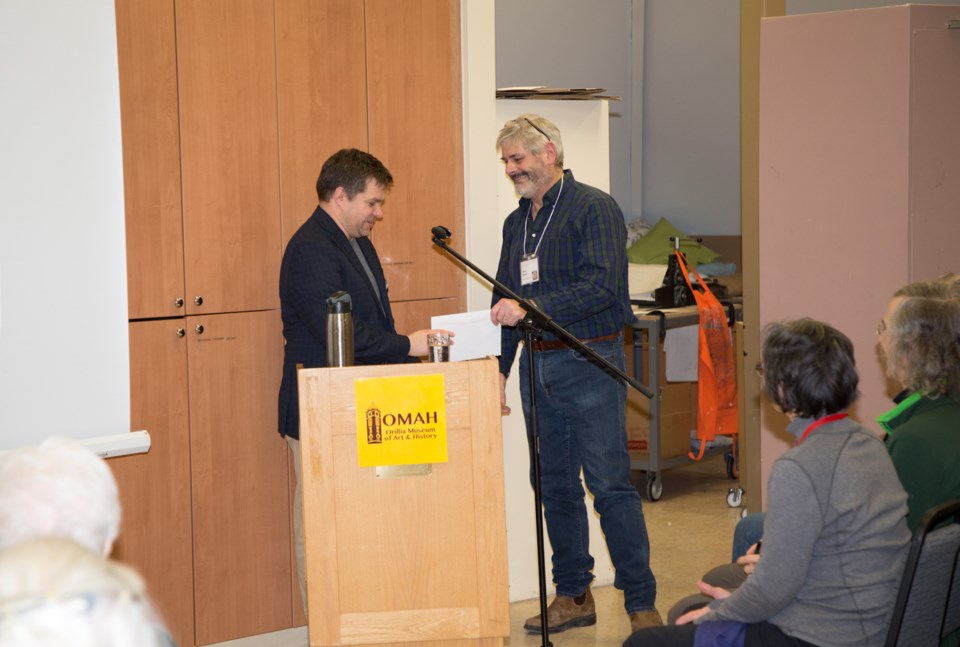NEWS RELEASE
ORILLIA NATURALISTS' CLUB
*************************
Ryan Post, lead hydrogeologist at the Nottawasaga Valley Conservation Authority, entertained the Orillia Naturalists’ Club on Feb. 7, 2018 with his wit and humour on several technical aspects of groundwater.
Hydrogeology is looking at the movement of underground water, but above-ground features also impact the subsurface conditions. Take, for example, the geological formation within Simcoe County.
Simcoe County has the Niagara Escarpment shaping the western edge, on the eastern edge are the hills of the Oro Moraine. In the centre of this is a depression that has deep, percolating soils that have become known as Minesing wetlands.
This formation actually has created an underground Chanel known as the “Laurentian water system” that once allowed the flow of water between Georgian Bay and Lake Ontario.
Starting with the hydrologic cycle, the presentation examined the hydrologic relation to wetlands as flow through systems (e.g. fens), groundwater discharge systems (e.g. marshes), groundwater recharge systems (e.g. bogs). Post described what geological formations are generally expected to be present to create each of the wetland types.
In a recent study that Post completed, particle tracking was used to delineate time of travel of underground water to the wetland and then Post reviewed the Minesing Wetlands from a hydrologic perspective and highlighted the connection to a groundwater dependent Species at Risk - the Hine’s Emerald Dragonfly (HED), of which Chris Evans gave a comprehensive overview of its biology and life cycle.
The dragonfly (HED) has very specific habitat requirements and are found only in the eastern portion of the Minesing Wetlands fens in Canada. The larval form of this dragonfly burrow in crayfish holes to avoid drying out during summer drought conditions.
Delving even deeper into the concepts of hydrogeology, he discussed the concept of particle tracking/groundwater flow movement and described the recharge and discharge relationships as it related to the critical habitat.
The next meeting of the Orillia Naturalists’ Club will be on Wednesday, Mar. 7, 2018 at 7:30 p.m. at the Orillia Museum of Art and History.
Mike Burrell will be speaking on the topic of “Using technology for Citizen Science”. As a real-time, online checklist program, eBird has revolutionized the way the birding community reports and accesses information about birds. Similar to eBird, iNaturalist is the tool for non-bird sightings and Burrell is an avid user of both.
*************************
